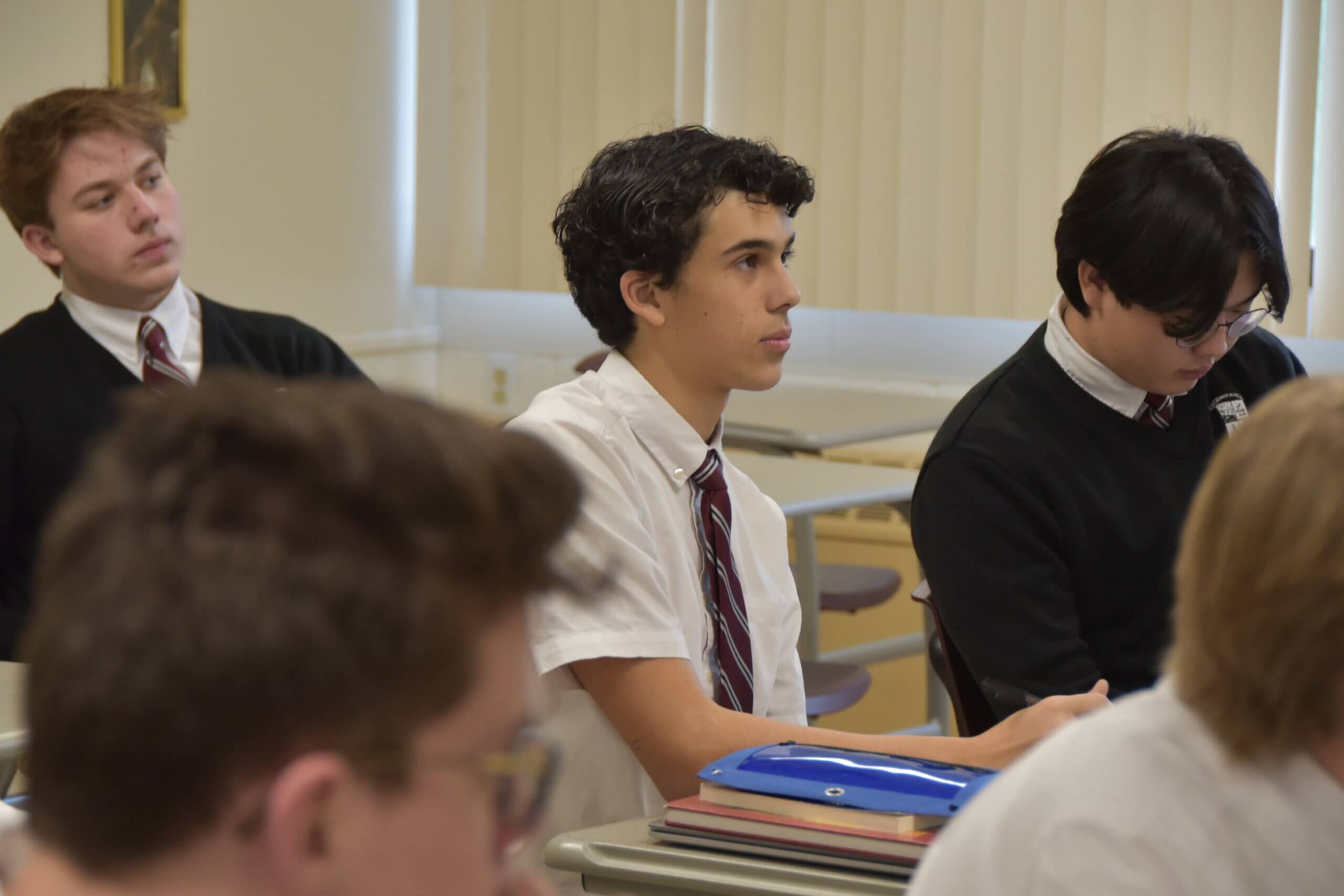Guest Post by Junior Demarco Valentino
How does energy transfer and in what ways? A Rube Goldberg machine has the answer you’re looking for. A Rube Goldberg machine is a project in which complex systems of energy transfers perform a simple task. Mr. Maul’s junior physics class experimented with Goldberg machines this fall through group projects. My team members were Noah Taylor, Duncan Brown, Joseph Wojciechowski, and myself.
Our goal was to have five energy transfers with at least three different types of energy transfers. First, we started off with some basic materials: marbles, dominoes, pull-back cars, tape, rubber bands, balloons, popsicle sticks, pens, needles, big Legos, cardboard, and foam tubes. Then we started crafting ideas and trying different things out. Once we had a solid foundation of what we wanted to do, and how we were going to use the transfers and materials, we got to work. We set a goal for our machine, which was to pop a balloon. Then, we started setting up our project, which actually ended up having 6 different energy transfers in it.
In the end, our project incorporated elastic potential energy, kinetic gravity, gravitational energy, and sound energy. Our first type of energy transfer was elastic potential energy to kinetic energy. We ran a pull-back car into a row of dominoes. When the dominoes fell, the last one hit a marble we had placed at the top of a ramp. This energy transfer was gravitational potential to kinetic energy.
The next energy transfer utilized gravitational and kinetic energy. The gravitational energy caused by the height of the ramp transferred to kinetic energy as the marble ran down the track. At the bottom of the ramp, the marble hit a domino that was holding back an already-wound-up pull-back car. When the domino moved out of the way, the pull-back car raced forward. This converted the car’s elastic potential energy to kinetic energy as it moved. Next, the pull-back car hit a big lego car with a needle on it. When the pull-back car raced into the big lego car, the lego car started to move forward, causing kinetic-to-kinetic energy transfer. Finally, the needle attached to the front of the car popped the balloon, which was taped at the end of the table. This last step transferred the car’s kinetic energy to sound energy as the balloon popped.
Overall, this project was a great experience for the class. Mr. Maul’s decision to give each of us the control of creating our own machines really helped us to understand the concept of energy transfers better. This experiment also helped us explore our creativity and problem-solving skills, because many times systems in the project would fail and we would have to rethink how it should work. Noah Taylor remarked, “I liked coming up with energy transfers and creating the machine,” while Thomas Shea reflected, “I enjoyed the teamwork aspect and overcoming the problems we encountered.”
The Rube Goldberg machine project was a unique opportunity for the class to show its creative side and really have fun with this project. In the end, I hope that we do more amazing projects in the future: we all had a great time creating and developing this one!


